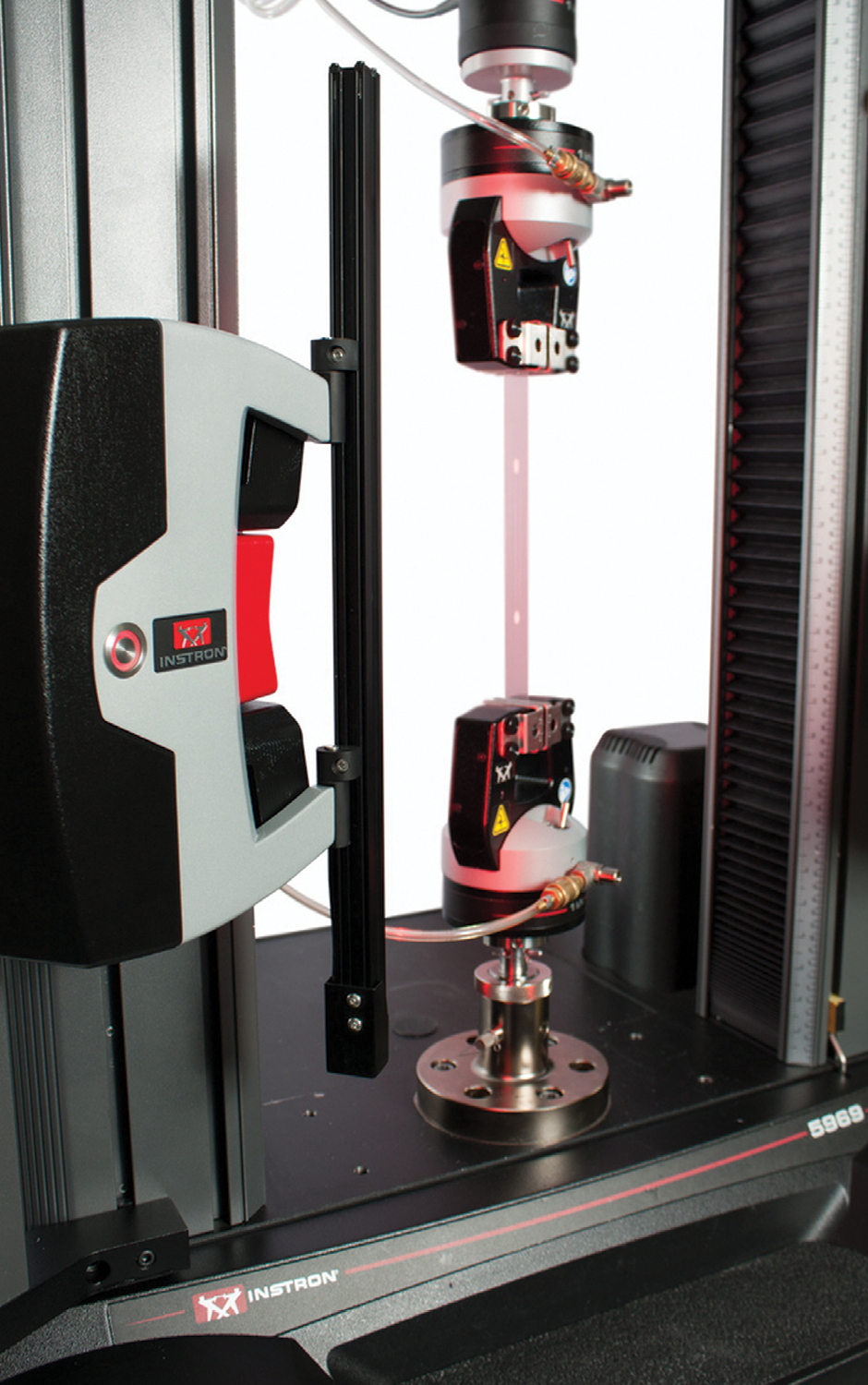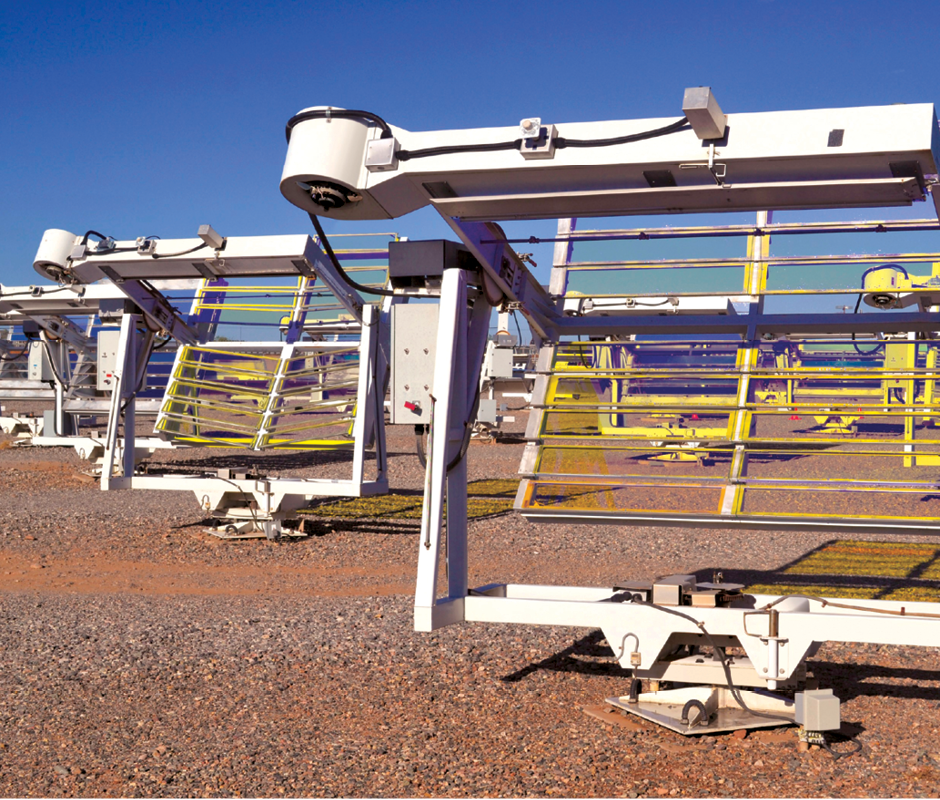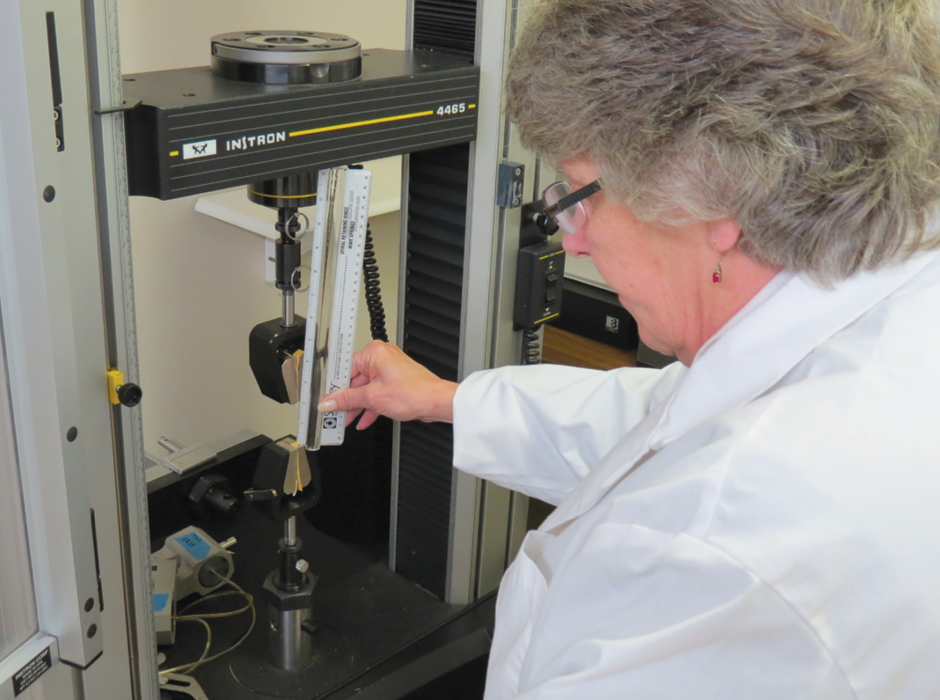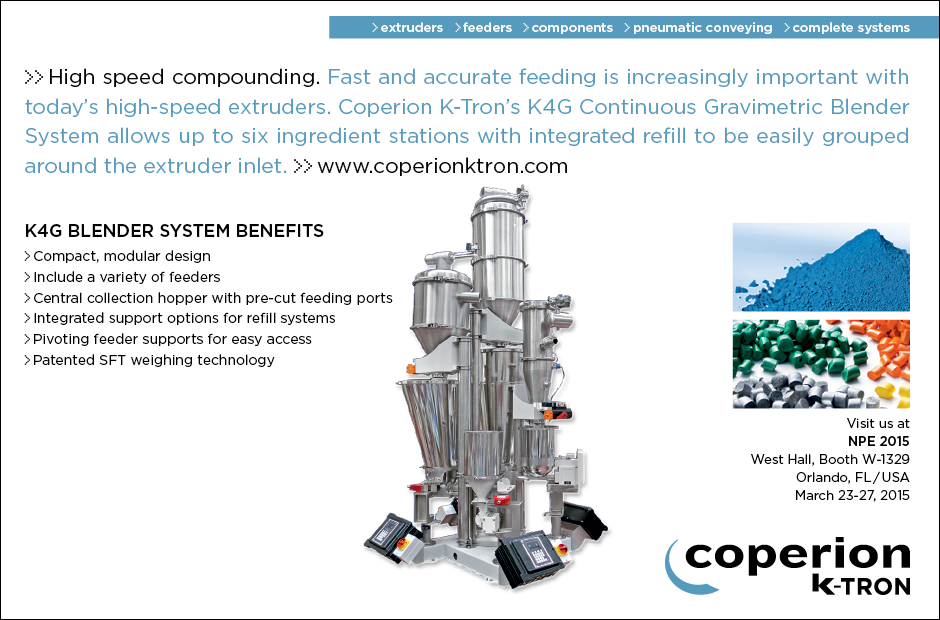Plastics Testing: Tackling New Challenges
Equipment options and regulations are influencing how to test materials, and what to test for
Previous Article Next Article
By Nancy D. Lamontagne
Plastics Testing: Tackling New Challenges
Equipment options and regulations are influencing how to test materials, and what to test for
Previous Article Next Article
By Nancy D. Lamontagne
Plastics Testing: Tackling New Challenges
Equipment options and regulations are influencing how to test materials, and what to test for
Previous Article Next Article
By Nancy D. Lamontagne

The Instron AVE 2 is a non-contacting extensometer for flexural, compression, and tensile testing (photo courtesy of Instron).

The Instron AVE 2 is a non-contacting extensometer for flexural, compression, and tensile testing (photo courtesy of Instron).

The Atlas Low-Temperature EMMA uses a cool-mirror technology to accelerate exposure while keeping temperatures low (photo courtesy of Atlas Material Testing Technology).

Analytical organic chemists interpret the data from gas chromatography–mass spectrometry (photo courtesy of NSL Analytical Services).

Mechanical testing with an Instron tensile tester is among the analytical services available in the lab of Plastics Forming Enterprises (PFE), LLC (see p. 8 of our March issue; photo courtesy of PFE).
New Requirements for Efficiency
Plastics are being utilized increasingly as engineering materials for applications once reserved for metals and other materials. “As plastics are being called upon to perform increasingly difficult tasks, they must be fully characterized to ascertain their potential. Stringency has increased across the board,” notes Florian Liebert, plastics and composites industry manager for Zwick Roell, an Ulm, Germany-based manufacturer of material testing equipment and software.
Balancing efficiency and accuracy can be challenging for internal testing labs. Zwick supplies systems that reportedly minimize sources of operator error and enable operators to perform work more efficiently and with the highest accuracy. For example, the company’s universal testing machines are designed for flexibility in a range of testing situations. Dual testing areas dramatically reduce changeover times and minimize the potential for errors that may result from complex test setup procedures.
The capacity of Zwick systems to save and recall the full test environment allows for extremely fast changeover times. “This is an essential element for high-volume labs that must also manage a large range of tests,” Liebert says.
Centralized characterization labs that must address the complete spectrum of testing requirements for plastics benefit from using testing systems that run on a single software platform. All Zwick systems—from universal testing machines to its HIT line of pendulum impact testers and Xflow series of melt flow indexers—run on a single software package. This means that operators don’t have to learn and engage multiple interfaces, reducing errors and increasing testing efficiency. “The testXpert II software readily works in concert with barcode scanners to track test specimens at the individual and lot levels, an essential function in quality control and quality assurance,” says Liebert.
The Zwick software incorporates user management features that present different access rights for the administrator and operator. Administrators can set the manner for how operators engage the system, which supports adherence with internal standards. Access rights at the operator level prevent the user from changing test methods, restrict access to test parameters, and limit adjustments that can be made to the test procedure. Administrators can also automate the transfer of data, allowing operators to focus on other tasks. The testXpert II software supports data export to a customer’s proprietary database, ERP, or LIMS system, as well as “one-click” export to Microsoft Excel, the company adds.
Note: This sidebar is based on text contributed by Zwick.—Ed.
Whether meeting standards, testing durability, or performing quality control checks, testing remains an important part of plastics manufacturing. New instruments and technology are helping to provide more accurate and reliable results while also cutting down on the time necessary for testing.
Compliance, Repeatability, and Efficiency
Richard Goshgarian, manager of Instron’s global plastics market, says there are three common challenges in plastics testing: compliance, repeatability of results, and improving efficiency/reducing cost. The company recently introduced several new products that help address these issues.
The AVE 2 is a new version of Instron’s non-contacting “advanced video extensometer” for flexural, compression, and tensile testing. The company says its high accuracy resolves common compliance issues for standards with difficult requirements, such as the accuracy required for ISO 527-2, particularly when measuring modulus. Improved repeatability of results is common when compared to traditional, manual extensometers, since less human intervention is required.
“The AVE’s high accuracy, large field of view, and non-contacting nature make it a one solution for all,” Goshgarian claims. “It has the accuracy to accommodate very rigid/stiff specimens that strain very little [and] the travel to accommodate high-elongation polymers (such as TPEs), and, because it’s non-contact, it can be used on delicate or thin materials, such as plastic film or foam, where traditional clip-on extensometers cannot be used.”
With the addition of DIC (digital image correlation) Replay Software, the AVE transforms into a self-contained package. Two-dimensional DIC software works in a post-processing mode, which allows users to continuously analyze data after a completed test. Unlike traditional extensometers, where users have to know where to place the extensometer prior to the test, the DIC software maps the entire specimen surface and records full-field information, allowing users to draw virtual extensometers anywhere on the specimen after the test. This way, users do not have to guess where the specimen or component is likely to fail.
In addition to material analysis, DIC Replay can be used to identify or prevent circumstances that could result in data integrity issues, such as improperly installed grips or misaligned specimens. “Before DIC Replay, digital image correlation was not something the average lab could support,” explains Goshgarian “It was very complicated, expensive, and only available as a third-party product. Our DIC Replay package is streamlined for the materials testing community, with an interface that is refreshingly simple and familiar.”
Instron also recently introduced a new biaxial extensometer, which measures axial and transverse strain simultaneously. Biaxial strain testing is necessary to determine Poisson’s ratio, which is the negative ratio of transverse to axial strain. This calculation is required for ASTM D638 and ISO 527-2 standards and also often used for simulating a material’s characteristics using computer modeling. Studies have shown a great deal of variance in the measurement of Poisson’s ratio between labs, and within individual labs.
“For plastics, Poisson’s ratio is one of the most challenging calculations you have to make,” says Goshgarian. “Results can easily be influenced if great care is not taken when attaching the extensometer onto the specimen. The slightest amount of knife-edge penetration can artificially increase results a great deal. We designed our biaxial extensometer with this in mind. It features a simple, single-handed operation that enables users to consistently attach the extensometer to the specimen in an efficient manner.”
Over the last year, Goshgarian has been leading seminars with the goal of educating test labs and personnel on the three challenges in plastics testing. He points out that compliance problems typically stem from a customer not being aware of changes in a standard or misinterpreting the standards, and that variability is typically a result of procedural issues, which can often be resolved with minor adjustments.
Under the Weather
Atlas Material Testing Technology LLC manufactures instruments for accelerated weathering both inside a box or outdoors. Richard Slomko, director of the Atlas Weathering Services Group, explains that the company also has over 20 test sites around the world, with the main locations for testing being a subtropical site in Miami and a desert site in Arizona. “Most people come to us to test their product because they are selling their product to someone who is requiring that they test to a particular ASTM or ISO standard,” he says.
The company developed its own devices to use for its weathering services (such as “equatorial mount with mirrors for acceleration,” or EMMA®, systems). The standard device, called EMMAQUA® (EMMA with water exposure), consists of ten highly reflective mirrors that focus the sun on a target board holding samples. It follows the sun over the course of the day to achieve approximately five times the natural weathering normally achieved in one year.
“Other companies have devices similar to the EMMAQUA, but Atlas has gone beyond the five times weathering acceleration,” says Slomko. “We worked with the National Renewable Energy Laboratory and Russian Institute of Laser Optical Technology under a U.S. Department of Energy program to develop our Ultra-Accelerated Weathering System, which can achieve up to 63 times acceleration.”
Atlas continues to take accelerated weathering further by developing new devices. Last year the company introduced the Ultra-Accelerated EMMA (UA-EMMA/EMMAQUA), which doubles the acceleration of typical EMMA by using a cool-mirror technology to accelerate exposure. These mirrors reflect UV and near-visible wavelengths of sunlight back onto the sample while the longer-wavelength visible and IR wavelengths, and thus the heat, go through the mirrors. “This means you’re applying more radiation on the samples, but not increasing the temperature, keeping temperatures lower than conventional EMMAQUA,” says Slomko.
The company’s most recent introduction is the Low-Temperature EMMA/EMMAQUA, which uses the same cool-mirror technology as the UA-EMMA but lowers temperatures even more. “Some materials like vinyl and composite wood decking have always experienced problems on these outdoor accelerated devices because the temperature would get too hot,” explains Slomko. “The cool mirror configuration of the LT-EMMA allows us to reduce temperatures to an effective temperature very close to ambient black panel temperatures, observed on an unaccelerated static rack in our fields, but with close to six times the acceleration of a conventional EMMAQUA.”
Although Atlas does sell EMMAQUA devices, Slomko says it will only do so if the customer’s site is in the right climate with the required direct sunlight. Looking ahead, the company continues to develop even faster methods for accelerated weathering that correlates with the real world.
Meeting Regulatory Requirements
NSL Analytical Services Inc. is an independent materials testing laboratory offering a variety of metallurgical, inorganic and organic, and ophthalmologic testing. It’s accredited under the ISO/IEC 17025 laboratory certification as well as the National Aerospace and Defense Contractors Accreditation Program, a rigorous testing accreditation applied to aerospace defense contractors.
For plastics, the company offers thermal analysis testing using methods such as thermal gravimetric analysis (TGA) anddifferential scanning calorimetry (DSC). It also characterizes polymers with FTIR (Fourier transform infrared) spectroscopy and can identify additives with gas chromatography–mass spectrometry (GCMS). NSL recently added a second GCMS instrument to keep up with demand, which mostly comes from companies seeking detection of phthalates and flame retardants in materials.
Michael Walker, the technical specialist in the Organic Materials Testing division of NSL, says that regulatory requirements drive most of the company’s analysis. Product manufactures need third-party certification that their products are free of restricted substances to meet regulations such as Europe’s Restriction of Hazardous Substances (RoHS), which specifies maximum allowable levels of certain heavy metals and flame retardants. Other regulations include the U.S. Consumer Product Safety Improvement Act, which addresses lead and phthalates, and California’s Proposition 65, which requires that Californians be notified if a product contains chemicals known to cause cancer or reproductive toxicity (currently including more than 800 chemicals and substances).
Testing Equipment: To Buy or Not to Buy
For plastics testing, companies must often decide between outsourcing testing or purchasing their own equipment for in-house testing. For some, the decision is a simple matter of return on investment, where the cost of outsourcing is compared against the costs associated with purchasing their own systems. There are also situations where timeliness of results is most critical and the time lost in specimen transit alone could warrant a purchase.
For the equipment sold by Atlas, any companies who cannot afford large capital purchases use weathering services, as do companies that may be testing for a single, simple project. “Also, for outdoor testing you have to use the benchmark climates, because the standards are written for these types of climates,” says Slomko. “For this reason, companies are more likely to use services to meet these outdoor testing standards.”
NSL’s Walker offers several scenarios that would lead companies to use outside testing labs such as NSL. For example, a third-party accredited laboratory might be necessary to meet a specification or regulatory requirement, or a company might not have the technical expertise or equipment to conduct testing.
“It’s not as simple as purchasing an instrument and doing the testing,” he explains. “You need the knowledge of how to run the instrument and interpret the results [and] you have to know what it will cost to pay someone to run it, and also be prepared for maintenance and upkeep. A company might also outsource routine testing in order to focus on product or business development.”
